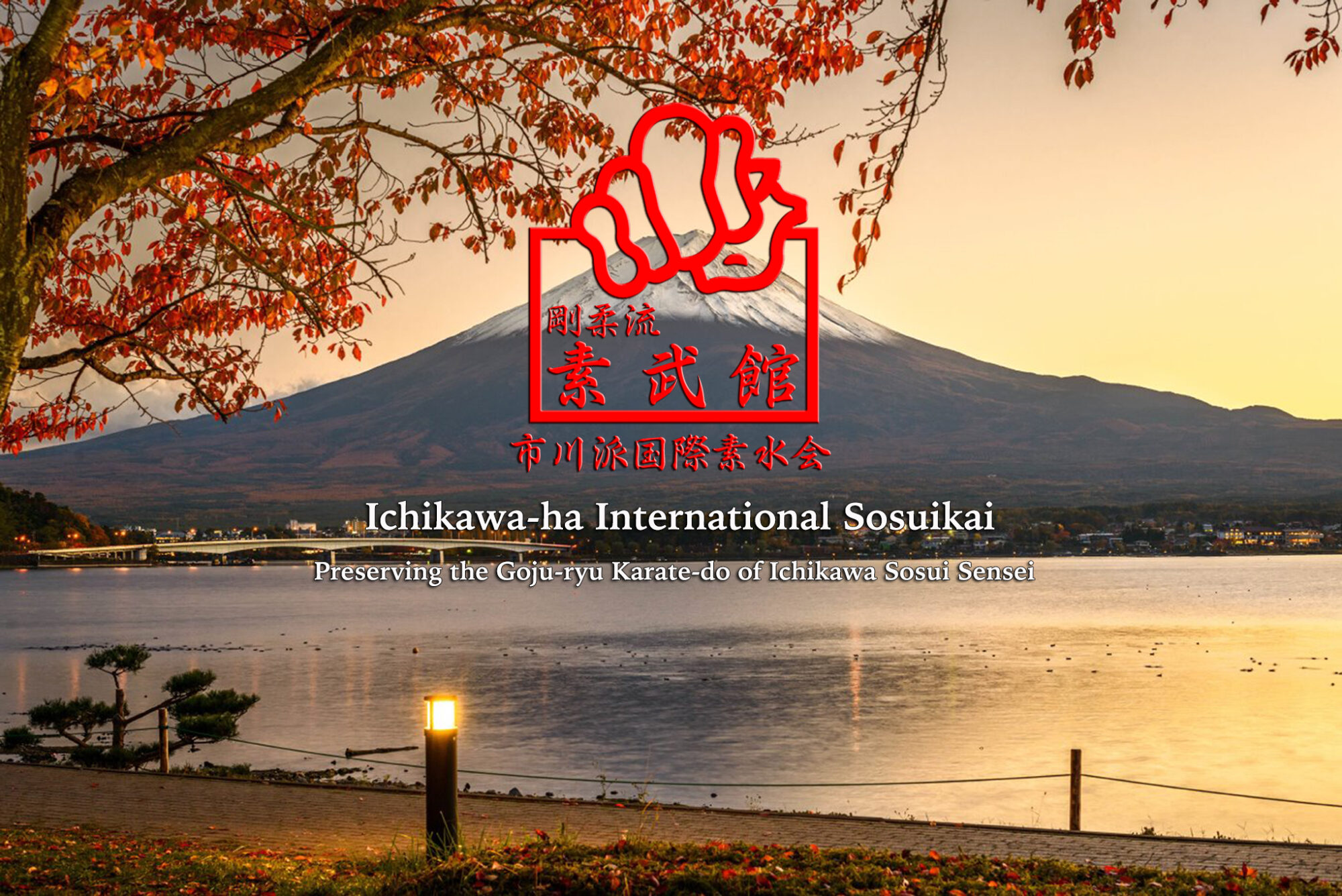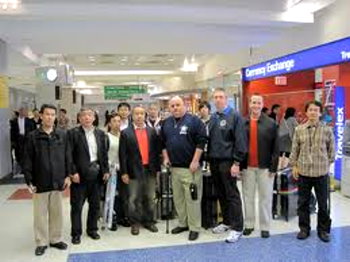Fall Gasshuku (September 2011)
On September 25, 2011 the Ichikawa-Ha Goju-ryu International Karate-do Sosui Kai held its quad-annual gasshuku at the Goshin-Kan dojo in Merrick, NY. The gasshuku was conducted by R. Choji Taiani Sensei and included members of the Honbu dojo as well as participants from the Philadelphia branch.

Fall Gasshuku 2011 – Seated (left) Khalid Newton Sensei;
(right) R. Choji Taiani Sensei.
Taiani Sensei opened the gasshuku by saying a few words about two important people who are no longer with us and then burning incense for their souls. Taiani Sensei also wanted all participants to understand that this gasshuku was dedicated to their memory.

Choji Taiani Sensei presenting
opening statements of the fall gasshuku
Yokoyama Go Sensei
It was with great sorrow that Taiani Sensei recently learned about the passing of Yokoyama Go Sensei. Members of the Ichikawa-ha Goju-ryu International Karate-do Sosui-kai are all aware that Taiani Sensei referred to Yokoyama Sensei as his “Dojo Brother.”

Yokoyama Go Sensei
Yokoyama Sensei gained celebrity status in Japan as a national hero during his youth by defeating, in a full-contact bout, a Muay Thai champion from Thailand whose specific goal was to humiliate the Japanese in the ring. As history tells it, the outcome was slightly different than the promoters predicted with a little help from Goju-ryu.
Yokoyama Sensei was best known by his peers in Goju-ryu by his performance of his signature kata Tensho. Because Tensho was so important to Yokoyama Sensei and became such an intricate part of his Karate, Ichikawa Sensei granted him special permission to create his own version of the kata, called “Dragon Tensho,” that he would perform in addition to Ichikawa Sensei’s.
Michael Mullan
2011 marks the 10th anniversary of the September 11th terrorist acts perpetrated against the United States in which almost 3,000 innocent people were murdered. Among the people that were taken from us that horrible day was one of our dojo members and personal students of Taiani Sensei, Michael Mullan. Michael Mullan will always be remembered by Taiani Sensei and all members of the organization, not only for his courageous acts on September 11th but for his lighthearted nature and ability to brighten everyone’s day.

Michael Mullan making everyone smile in Japan
When gasshuku started, Taiani Sensei turned the floor over to his chief instructor, Christopher Lorentzen Sensei, who started everyone off with Damo Taiso exercises created to loosen up and prepare all for Karate-do training.

Christopher Lorentzen Sensei guides gasshuku participants
through Damo Taiso exercises
After Damo Taiso, Taiani Sensei took the floor and in keeping with tradition, outlined the overall goals of gasshuku that we were looking to accomplish. This particular time, Taiani Sensei thought it was important for us all to recognize the differences between traditional Goju-ryu and Orthodox Goju-ryu. He started by comparing and contrasting very simple kihon to make his point.

Taiani Sensei (left) demonstrates differences between traditional
and orthodox Goju-ryu with Lorentzen Sensei (right)
One of the main focal points of this year’s fall gasshuku was for the class to gain an understanding of Shisochin kata. Taiani Sensei mentioned that he was going to take a very “old” approach in teaching everyone this kata which is much different than the norm. Taiani Sensei explained that the “old” way of learning kata was for the student to first be versed in all of the kihon contained therein. Then, the student would learn any bunkai associated with the kata. Finally, all of the components come together for a finished product to be practiced and polished.
It didn’t take long into learning Shisochin to witness some of the devastating techniques that it possesses.

Opening strikes of Shisochin demonstrated by Taiani Sensei (left).
Lorentzen Sensei (right) hopes for the best.
Quite often, students of Taiani sensei hear him discuss Ichikawa Sensei’s principles about the animals present in Goju-ryu Karate-do. “Although it’s widely accepted that Goju-ryu gets much of it’s influence from the crane and the tiger, Ichikawa Sensei always taught us to look for the other animals that are present in the kata and ultimately in the bunkai.”
An example of this can be seen in the photo below with the application of tortoise technique.

Taiani Sensei (left) shows a slightly different technique than the standard traditional “uppercut”against Ryan Sensei (right)
As usual, students were very surprised at how many grappling/grabbing techniques that are contained in Goju-ryu Karate-do kata. It’s certainly not all punching and kicking.

Taiani Sensei (left) demonstrates the tremendous amount of grappling techniques contained in Goju-ryu kata.

Seated: Khalid Newton Sensei (left) R. Choji Taiani Sensei (right) – Seiza: Scott Hassell Sensei – Standing: Michael Ryan Sensei (left) Christopher Lorentzen Sensei (right)

 Khalid Newton Shihan and Christopher Lorentzen Shihan Performing
Khalid Newton Shihan and Christopher Lorentzen Shihan Performing Shuaiyb Newton Sensei Performing the Opening Technique of Tsuru-Ho.
Shuaiyb Newton Sensei Performing the Opening Technique of Tsuru-Ho. 





 Chiba Kenjiro Soke with Mrs. Chiba
Chiba Kenjiro Soke with Mrs. Chiba


















